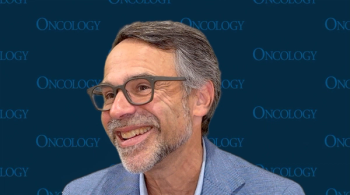
Oncology NEWS International
- Oncology NEWS International Vol 4 No 6
- Volume 4
- Issue 6
Radiation Pretransplant Enhances Survival in Advanced AML Patients
PARIS, France--Cyclophosphamide with total body irradiation (TBI) provides better survival rates than cyclophosphamide plus busulfan when used as a pre-autologous bone marrow transplant (ABMT) conditioning regimen in patients with advanced acute myeloid leukemia (AML), a University of Minnesota study has found.
PARIS, France--Cyclophosphamide with total body irradiation (TBI)provides better survival rates than cyclophosphamide plus busulfanwhen used as a pre-autologous bone marrow transplant (ABMT) conditioningregimen in patients with advanced acute myeloid leukemia (AML),a University of Minnesota study has found.
The Minnesota study included 75 patients, 35 of whom were participantsin a randomized trial comparing the two conditioning regimens.Autologous marrow was purged with 4-hydroperoxycyclo-phosphamidebefore reinfusion.
For patients beyond first remission, cyclophosphamide (Cytoxan,Neosar), 120 mg/kg, plus 1,320 cGy TBI given in eight fractionsover 4 days, was associated with a 2-year disease-free survivalrate of 38%, compared with 7% for a regimen of cyclophosphamide,200 mg/kg, plus busulfan (Myleran), 16 mg/kg.
"There was a clear advantage of cyclophosphamide/TBI overbusulfan/cyclophosphamide," Kathryn E. Dusenbery, MD, saidat the American Radium Society meeting. Among patients in firstremission, however, the survival differences did not reach statisticalsignificance.
Dr. Dusenbery pointed out that there were no differences betweenthe two regimens in the time required for the absolute neutrophilcount to reach 500, or in the duration of hospital stay. Likewise,she observed, the incidence of acute toxicity, including interstitialpneumonitis and hemorrhagic cystitis, was similar in both studyarms.
In contrast, veno-occlusive disease developed in seven patientsconditioned with busulfan/cyclophosphamide, but in none of thosewho received chemotherapy plus TBI.
"In the future, our preferred regimen will be cyclophosphamideand TBI," Dr. Dusenbery said. "It is unlikely that wewill be able to escalate the TBI doses too much beyond the 1,320cGy we use now," she added.
Dr. Dusenbery believes that future efforts will focus on furtherdecreasing the relapse rate of AML, either by developing bettermarrow purging methods or by treating patients with other agents.
Articles in this issue
over 30 years ago
IDEC-C2B8 Antibody Is in Phase III Testing for B-Cell Lymphomaover 30 years ago
Dr. Peters Named Head of the Michigan Cancer Foundationover 30 years ago
Broad-Spectrum Sunscreens Block UVA and UVBover 30 years ago
Trials of AccuSite Injectable Gel From Matrix Begin in Basal Cell Caover 30 years ago
Outpatient ABMT at Duke Leads to Savingsover 30 years ago
Algorithm Optimizes Value of CA125 II Screening for Ovarian Caover 30 years ago
Better Ovarian Cancer Outcome With IP Cisplatinover 30 years ago
Epirubicin Effective But Toxicity Is IncreasedNewsletter
Stay up to date on recent advances in the multidisciplinary approach to cancer.

















































































